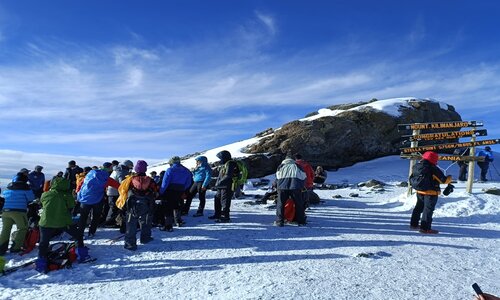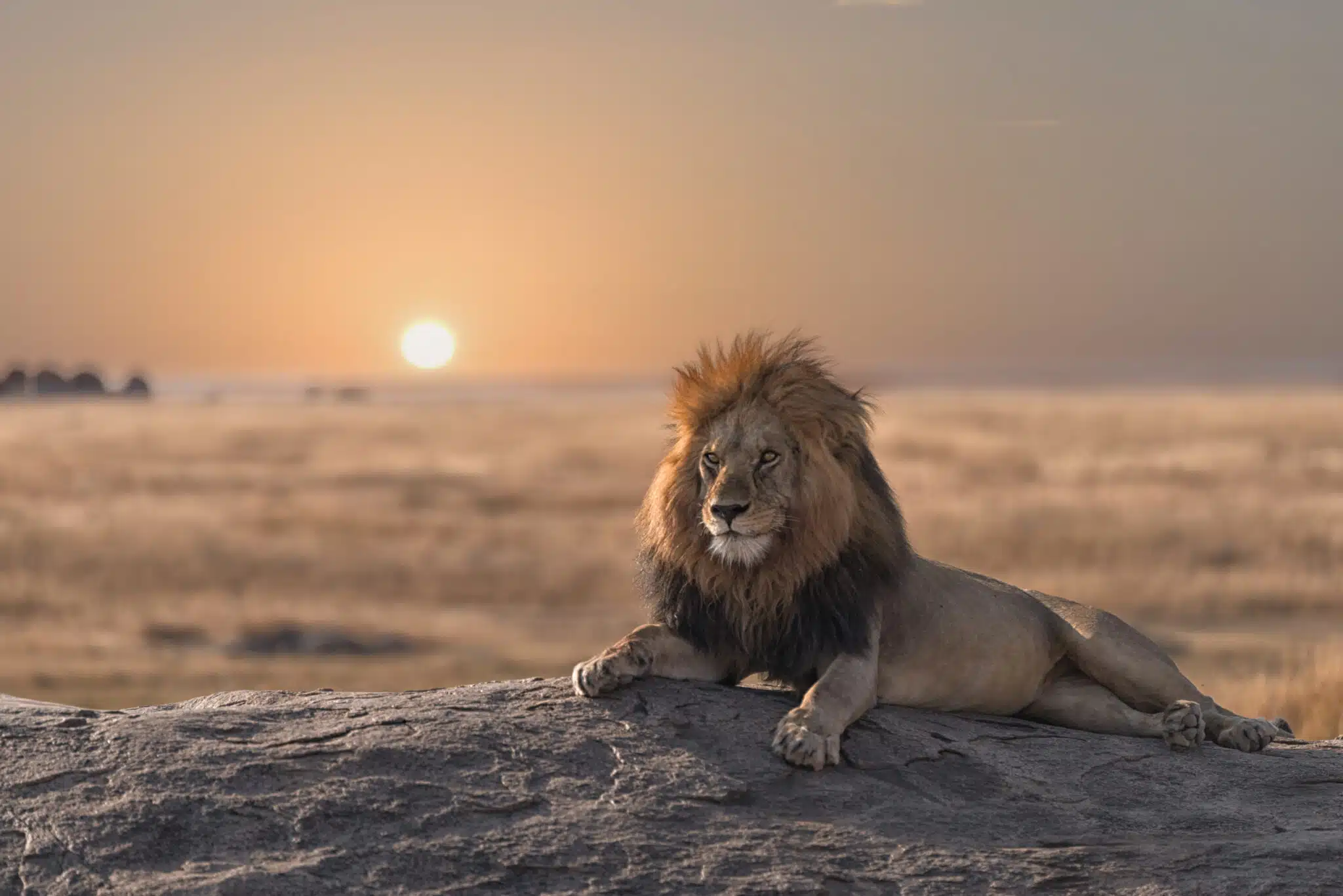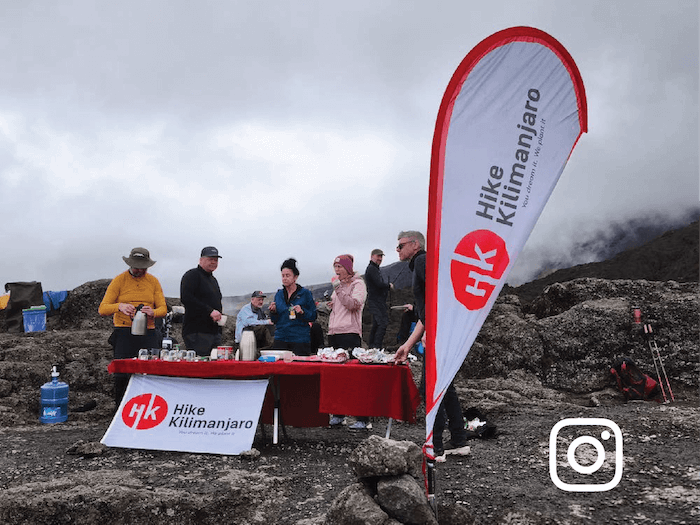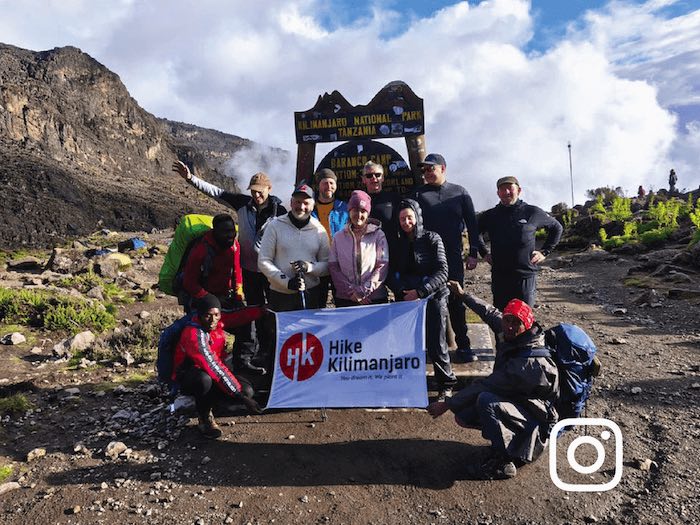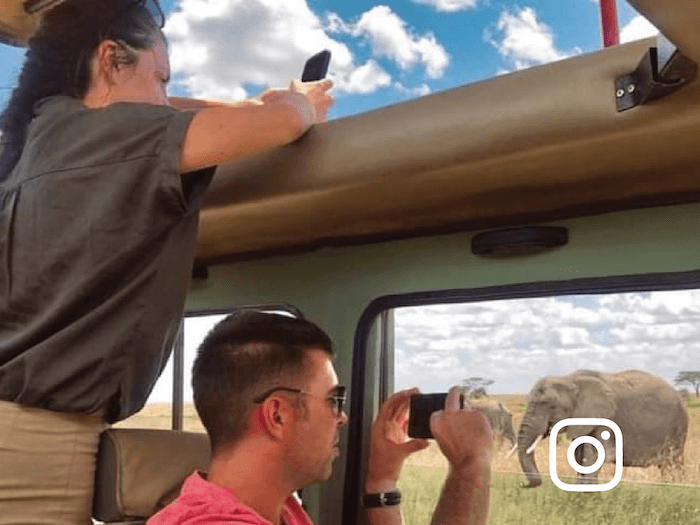Tanzania’s Hidden Gem
Arusha National Park
About Arusha National Park
Arusha National Park, located in northern Tanzania, is a compact yet incredibly diverse protected area spanning 137 square kilometers. Nestled between Mount Kilimanjaro and Mount Meru, it features a remarkable range of landscapes within a short drive from Arusha city. The park encompasses Ngurdoto Crater, the tranquil Momela Lakes, and the towering Mount Meru (4,566 meters / 14,980 feet), Tanzania’s second-highest peak. Its scenic variety and ecological richness make it a popular destination for walking safaris, canoeing, and wildlife viewing without the crowds of larger parks.
The park’s elevation ranges from around 1,400 meters to over 4,500 meters, offering a mix of ecological zones within a small area. The lowland montane forest is lush and green, home to blue monkeys, black-and-white colobus monkeys, and vibrant birdlife. Surrounding Ngurdoto Crater, sometimes called the “Little Ngorongoro,” are swamps and forested walls where buffaloes and warthogs roam. The Momela Lakes, a collection of alkaline lakes, support a wide variety of waterbirds, including flamingos and herons, with hippos often seen nearby.
Higher up, Mount Meru provides a mix of woodland and alpine environments, ideal for more adventurous trekkers seeking panoramic views of Kilimanjaro. This diversity in terrain and wildlife, all within a single park, makes Arusha National Park a unique and rewarding destination for nature lovers and those seeking a rich safari experience close to Arusha city.
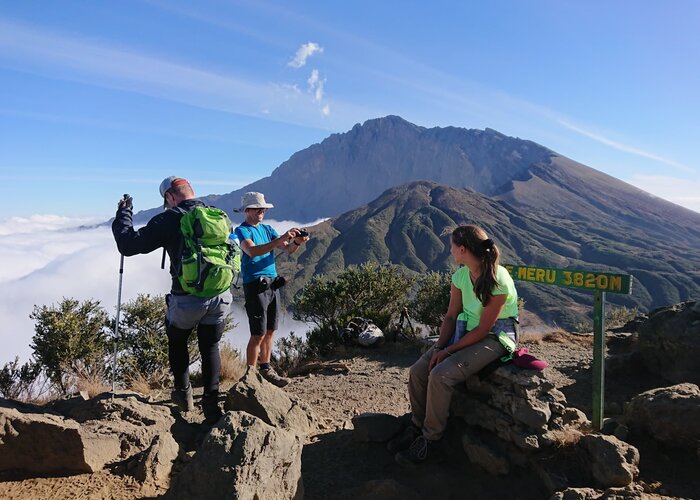
Wildlife of Arusha National Park
Arusha National Park is rich in biodiversity despite its relatively small size, supporting a wide variety of wildlife across its diverse habitats. The park is home to over 400 bird species, including flamingos, African fish eagles, and turacos, making it a paradise for birdwatchers. Mammals commonly seen include elephants, giraffes, buffaloes, zebra, blue monkeys, black-and-white colobus monkeys, hippos, and baboons.
One of the park’s unique features is the presence of large mammals within close proximity to scenic landscapes like the Ngurdoto Crater and Momela Lakes, where hippos and buffaloes often gather. The park’s forests are alive with primates, and walking safaris provide excellent opportunities to observe these animals up close. Although predators such as leopards and hyenas are present, they tend to be elusive. The combination of abundant wildlife and diverse ecosystems makes Arusha National Park a special destination for both wildlife enthusiasts and nature lovers.
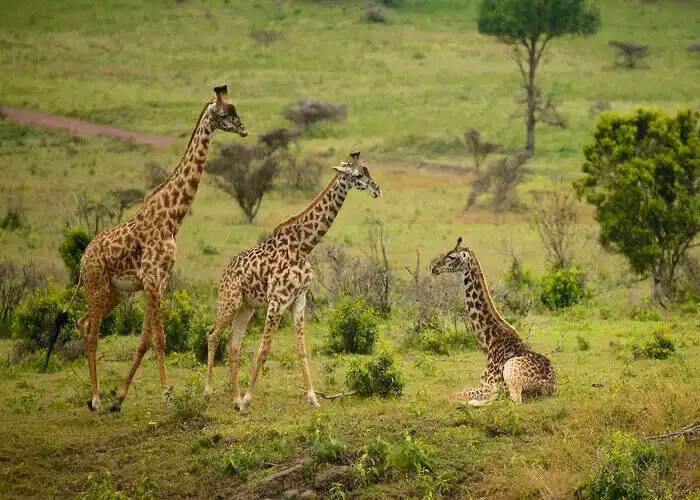
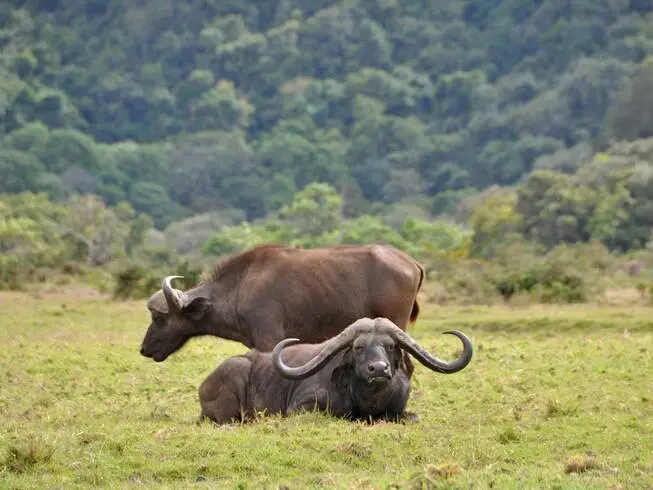
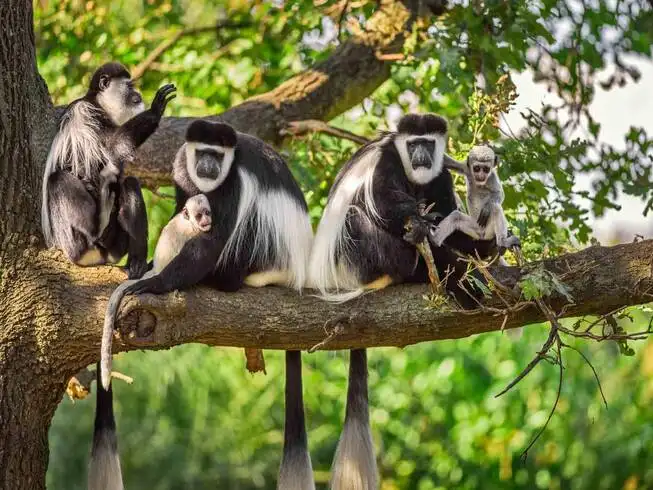
Arusha National Park’s Key Attractions and Activities
Arusha National Park offers a variety of experiences tailored to different interests and activity levels. The park’s main highlights include Mount Meru, Tanzania’s second-highest peak, which attracts trekkers looking for challenging yet rewarding climbs with stunning views. For those preferring gentler adventures, the Ngurdoto Crater provides scenic walking trails around its forested rim, home to buffaloes and baboons.
The Momela Lakes area is perfect for birdwatchers and wildlife enthusiasts, with opportunities for canoeing among hippos and flamingos. Additionally, the park offers unique walking safaris through montane forests, where visitors can spot colobus monkeys, blue monkeys, and a variety of bird species. Whether you seek a vigorous mountain trek, peaceful wildlife viewing, or immersive nature walks, Arusha National Park caters to a wide range of preferences, making it a versatile destination for visitors of all fitness levels.
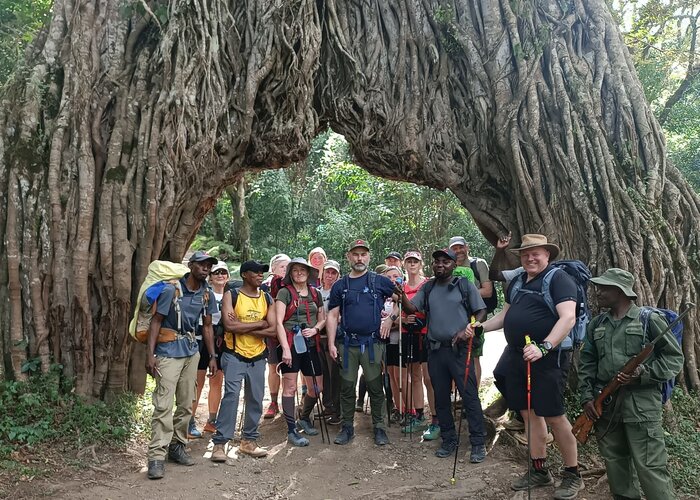
The Origin of the Name "Arusha National Park"
The name “Arusha” is derived from the Arusha people, a Bantu-speaking ethnic group who have historically inhabited the region surrounding the park. The Arusha people share close cultural and linguistic ties with the Maasai, though they have distinct traditions and ways of life. Traditionally, they have lived in the fertile lands at the foot of Mount Meru and the surrounding areas that now make up Arusha National Park. Their deep connection to the land is reflected in their agricultural practices, social structures, and cultural heritage, which have been passed down through generations.
The exact meaning of the word “Arusha” remains a subject of debate among historians and linguists, but it is often believed to stem from the word “Arus”, which loosely translates to a group, community, or gathering of people. This interpretation highlights the sense of unity and belonging central to the identity of the Arusha people. The name thus symbolizes not only the people themselves but also their harmonious relationship with the natural environment they have stewarded for centuries.
Arusha National Park was named in honor of this indigenous community and the broader region they call home. Unlike Kilimanjaro, whose name carries multiple linguistic and cultural interpretations from various groups, the name Arusha is more firmly anchored in the identity of its native inhabitants. This strong cultural foundation continues to influence the park’s significance today, fostering a landscape where both nature and local heritage are preserved and celebrated. The park stands as a testament to the enduring bond between the Arusha people and the rich ecosystems of northern Tanzania.
Choosing the Best Experience in Arusha National Park
Which is the Best for You?
Deciding how to explore Arusha National Park depends largely on your interests, fitness level, and the time you have available. Whether you prefer wildlife viewing, scenic hikes, or cultural encounters, the park offers a variety of options to suit different preferences.
For visitors seeking a leisurely day trip with wildlife sightings, the game drive routes around the Momela Lakes and Ngurdoto Crater provide excellent opportunities to see elephants, buffalo, hippos, and diverse birdlife, all within a relatively short time. These drives are ideal for families and those wanting a comfortable, wildlife-focused experience.
If you enjoy active adventures, the Mount Meru trek offers a rewarding challenge with spectacular views and a chance to experience different ecosystems on foot. For a unique perspective, walking safaris through the park’s montane forest allow close encounters with primates and bird species, making it perfect for nature enthusiasts and photographers.
Ultimately, the best way to experience Arusha National Park depends on your personal interests and stamina. Combining game drives, walking safaris, and mountain trekking can provide a well-rounded and memorable visit tailored to your goals.
Traveler Reviews
These full and frank reviews are from travelers who have traveled with Hike Kilimanjaro previously. The reviews and experiences shown here are from reputable travel websites like TripAdvisor, Google, Facebook, and Trust Pilot, etc.
EXCELLENTVerified "This 3-day luxury safari combined with a Kilimanjaro hike exceeded all my expectations. "This 3-day luxury safari combined with a Kilimanjaro hike exceeded all my expectations. The accommodations were elegant and comfortable, and the guides were knowledgeable and friendly. The safari offered incredible wildlife photography opportunities, and climbing Kilimanjaro was a true test of endurance and strength, but the stunning vistas made it all worthwhile. An exceptional journey that I will cherish forever."Verified "My entire expectations were surpassed by climbing Kilimanjaro. "My entire expectations were surpassed by climbing Kilimanjaro. When one reaches Uhuru Peak, the sensation of accomplishment is indescribable. Because of the well-planned logistics, the amiable crew, and the breathtaking environment, the entire hike was easy and fun. It is a very remarkable event that I would gladly repeat. For adventurers, it's a must.Verified Tanzania truly offers a world-class experience. "My trek up Mount Kilimanjaro in Tanzania exceeded all my expectations. The stunning scenery, from lush rainforests to icy glaciers, was awe-inspiring. The local guides and porters were incredibly supportive and professional, ensuring a safe and enjoyable climb. It was challenging but incredibly rewarding. Tanzania truly offers a world-class experience for anyone looking to conquer Africa’s highest peak."Verified I feel accomplished and thankful. Kilimanjaro climbing was satisfying and difficult at the same time. Along the way, there was breathtaking natural splendour and a variety of diverse habitats. The guiding team's assistance was outstanding and got us through some really difficult times. After completing this amazing journey, I feel accomplished and thankful.Verified Thanks to their knowledgeable advice. From beginning to end, Hike Kilimanjaro offered a smooth and well-planned trip. Their staff made sure we were at ease and ready by being helpful and considerate. Thanks to their knowledgeable advice, climbing Kilimanjaro was difficult but incredibly gratifying. They are the ones I would most certainly pick again for excursions in the future.Verified "An amazing and well-planned adventure. "An amazing and well-planned adventure! The climb was fun and safe because of the team's experience and upbeat demeanour. I was encouraged by the journey and pleased to have reached the top of Africa.Verified Highly recommended this tour agency. Wonderful experience! We had a fantastic trip and enjoyed the entire team; we always felt very protected and taken care of. Highly recommended. I want to thank Keddy in particular; you were the best mentors .Verified "My Kilimanjaro trek was an extraordinary experience. "My Kilimanjaro trek was an extraordinary experience. The route was well-organized, and the staff was attentive and encouraging throughout the climb. The sense of accomplishment upon standing on the summit was overwhelming. The scenery, the challenge, and the sense of connection with nature made this hike truly special. I highly recommend it to anyone looking for a once-in-a-lifetime adventure."Verified Well Organized and Unforgettable. Hiking Kilimanjaro with a well-run tour company was an incredible experience. The crew was courteous and made sure we were fed, acclimated, and inspired at every stage. The support from porters and guides, as well as the companionship among hikers, helped to make the difficult days bearable. It was weird to be at the top above the clouds. Undoubtedly a life-long accomplishment I will always treasure.Verified Top notch safari The customer service is on point. Drivers were there to pick us up on time. We saw all the big 5 in Serengeti /Ngorongoro Crater.The accommodation booked Embalakai had great food and staff.Couldn't have asked for a better safari experience. Top notch
Speak to an Expert
Need assistance with your booking? Our friendly Tanzania-based expert team is here to help. Feel free to reach out with any travel-related questions or concerns.

Maxon

- WhatsApp +255 692 406 444


